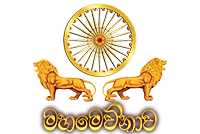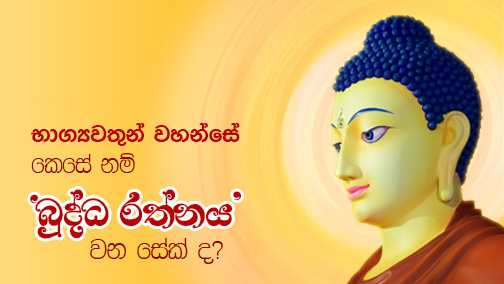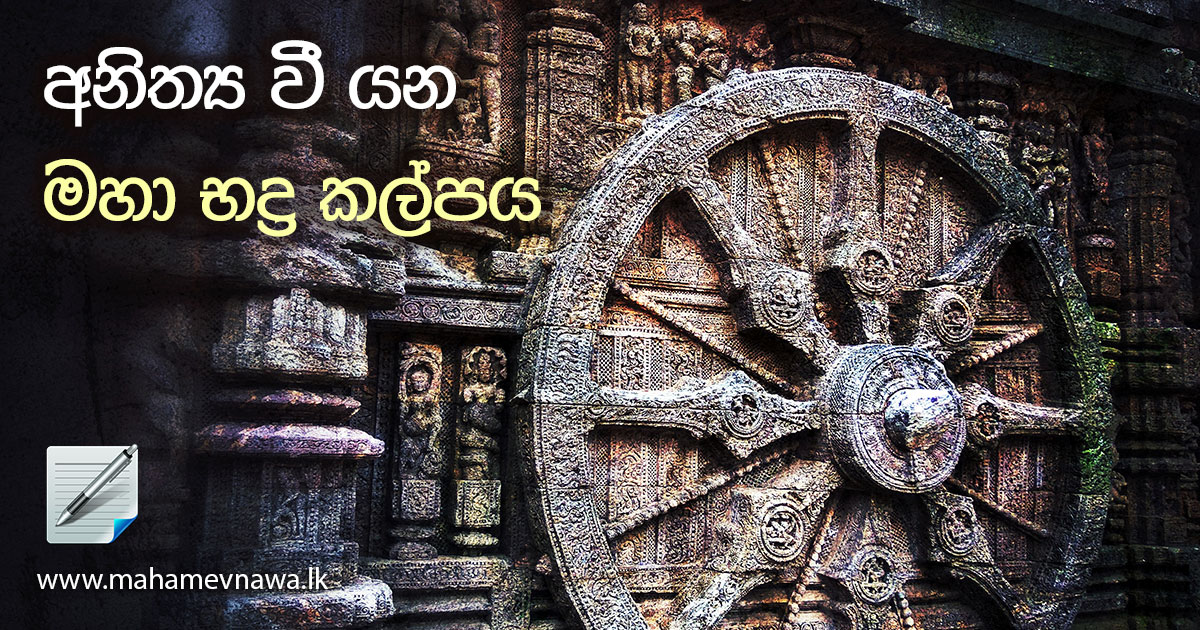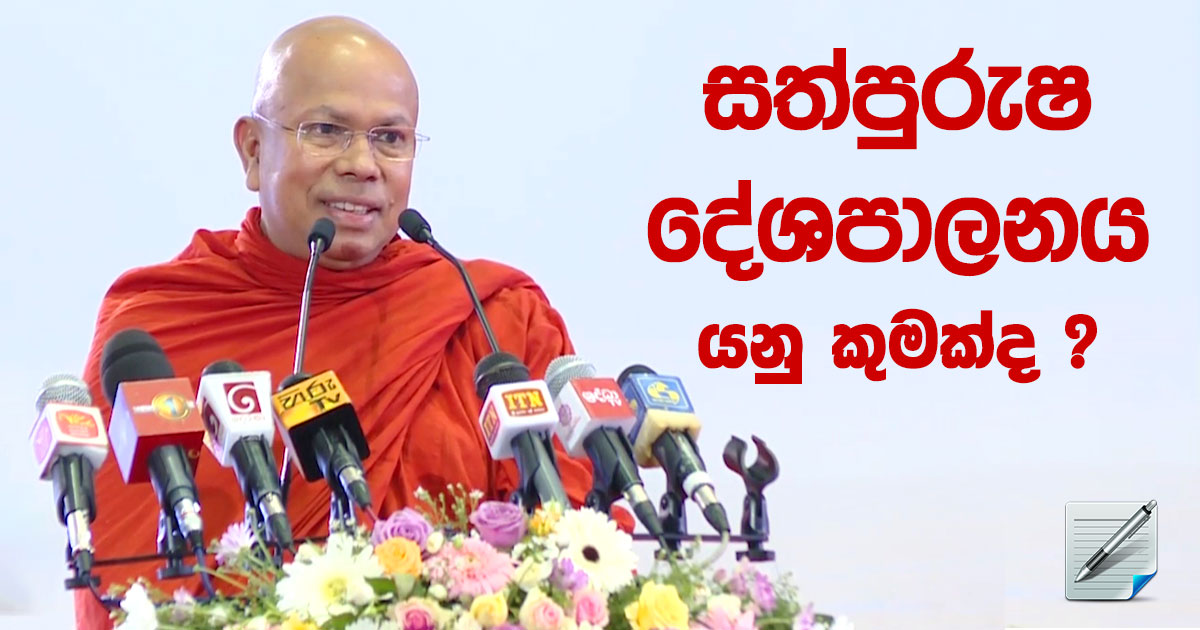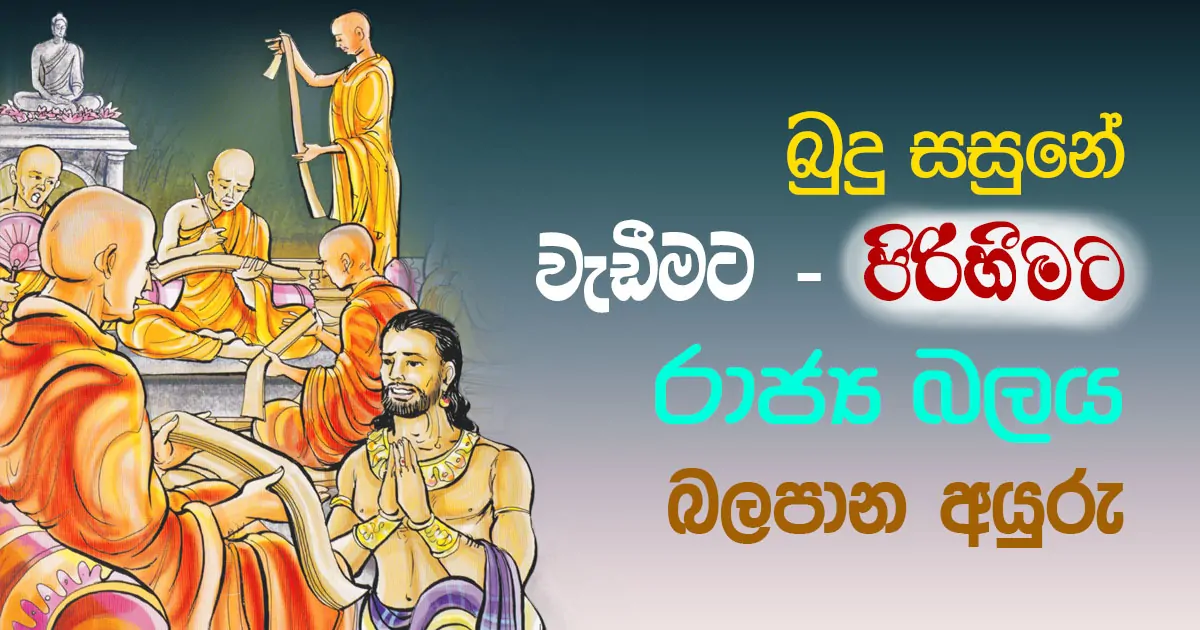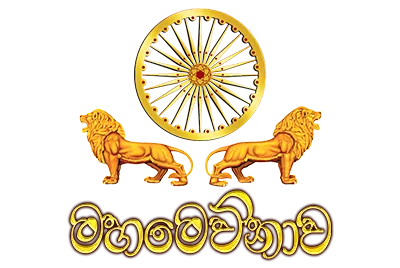On that day, Brahmin Jānussōni dressed in white and prepared his carriage of white horses with white color. He then started his journey towards the City Sāvatti. On his way to his destination, he saw his friend Pilhōtika who is of the cast Vaccāna.
“Hey friend Vaccāna, where are you coming from in this midday?”
“Friend, I am on my way back from Gautama Supreme Buddha.”
“Aha. What do you really think about wisdom of the Gautama Supreme Buddha?” Is he truly a great sage?”
“What are you saying friend? He is indeed a great wise person. I am not capable of knowing His great wisdom – only another person of such wisdom can learn His wisdom.”
“Wow! Our friend Vaccāna is praising the Supreme Buddha a lot.”
“Friend, who am I to praise the Supreme Buddha. I don’t have any suitability to do such a thing. He is the most praiseworthy person – He is the greatest among gods and humans.”
Brahmin Jānussōni then respected Pilhōtika’s idea and asked,
“Actually Vaccāna, I am happy about your abnormal consent about Him. Tell me friend – what did you see in the Supreme Buddha to get pleased about Him this much?”
“Friend, let me show you an example. A man walks into a forest of large elephants. He sees large foot prints of big elephants on the ground. Then he thinks, ‘this step is indeed of a large elephant.’ Like that manner, I also saw four signs of steps/features in the Supreme Buddha. I also then came to a conclusion that ‘the Most Fortunate One is indeed the Supreme Buddha. His Dhamma is well preached (Swakkhāta). His disciple Sangha is following the noble path (Supatipanna).”
“Actually Vaccāna, what are those four features you saw in the Supreme Buddha?”
“Friend, there are Kshattriya people who participate in great debates among us. It’s like the first sign of steps. There are wise Brahmins. It’s like the second sign of steps. There are wise household people. It’s like the third sign of steps. There are also wise and keen sages. It’s like the fourth sign of steps. And this is how these four types of people are like the four signs of steps – they get together as groups. Then they create questions and plan various things like following:
‘The Supreme Buddha is coming to that village. People say that He is a wise person. Let’s see how wise he is. We can ask these and these questions. When He answers our questions in this manner, we can ask Him other questions… In this way, we can start our argument with Him.’
So these people thus think of some questions and go see the Supreme Buddha when He comes to a village. Our Supreme Buddha then preaches His Dhamma to them. Hearing that wonderful Dhamma, they become very happy. They don’t ask any question, so how can they argue? They all become disciples of the Supreme Buddha. That group of people become Bhikkhus under the guidance of the Supreme Buddha. Later they think, ‘Oh! We were fortunate that the Supreme Buddha was born to this world. It is only now that we are true sages. If it isn’t for the Supreme Buddha, we’ll be destitute in our false views.’
This is why friend that I am well pleased about the Supreme Buddha without any doubt.”
Then Mahāsāra Jānussōni Brahmin got down from his carriage, wrapped his body using his shawl, and facing the direction of the Temple Jētavana he said following words three times in a worshiping posture,
“May my veneration to the Supreme Buddha! Friend, I am so happy. I also have the chance to meet the Gautama Supreme Buddha. I’d also like to speak with Him. This is great. This is great. This is great.”
With that delighted mind, Jānussōni Brahmin went straight to see the Supreme Buddha on that day. After greeting the Supreme Buddha, Jānussōni Brahmin told Him about the discussion he had with his friend. Then the Supreme Buddha said,
“That example about the steps of elephants is not complete. Let me tell you it completely.
Let’s say a man goes into a forest of elephants. He sees steps of those elephants. Those steps are large in both directions. If he is capable of identifying the largest elephant, he should not come to a quick conclusion that these are the steps of ‘the great elephant’. Do you know why? Brahmin, it’s because there are large female elephants known as Vāmanikā. They also have large feet.
What he should do is keep moving forward checking the path of those elephant foot prints. When he moves forward like that, he sees large foot prints of elephants and tall places on the tress where elephants have scratched their bodies. Even then, he shouldn’t come to a conclusion that this is the great elephant. It is because that there are larger female elephants known as Uccākulārikā who have large foot prints and tall bodies.
What that man should do is move further in the path of elephants checking their foot prints. Then he sees large foot prints, tall places on trees where elephants have scratched their bodies, and branches broken by elephants’ tusks. Even then, he shouldn’t come to a quick conclusion that there is the great elephant.
He should move forward further checking the signs of the great elephant. Then he sees large foot prints, tall places on trees where elephants have scratched their bodies, broken branches, and signs of strokes of elephant tusks. At that point, he sees the great elephant from his own eyes. He sees that great elephant either walking outside, sleeping, or sitting. Then he should come to a definite confirmation that this is the great elephant.
Brahmin, the path/practice of the Order of the Supreme Buddha is like that. The Arahat Samma Sambuddha is born to this world very rarely. He preaches the Dhamma, which is pure at the beginning, middle, and end. Then a household person hears this Dhamma and pleases about it. That person realizes that it is difficult to practice this pure path (Brahmacarī) disclosed in this Dhamma by living a household life. He becomes a Bhikkhu by giving up any attachment to his parents, relatives, friends, and his belongings.
After becoming a Bhikkhu in the Dispensation of the Supreme Buddha, he protects his precepts and becomes virtuous. He refrains from killing beings and lives with a loving-kindness mind. With a pure mind free from any thievish thoughts, he lives refraining from stealing. Observing the precept of refraining from any sexual conduct, he lives a pure life free of such impure conducts. He does not lie, tell tales, speak ferocious words, and any words that don’t have any useful meaning. He only speaks true, placid, and kind words. He does not make money doing any jobs or businesses. He doesn’t take any messages from one person to another. He is content with what he gets and like a bird who bears only the weight of its feathers, he lives a correct life pattern with just a three-fold robes and a bowl.
That Bhikkhu tames his faculties. He doesn’t allow his eyes, ears, nose, tongue, body, and mind to get along with any defilements. He disciplines, protects, and tames his faculties. Because of this, he gets a pleasure from his own practices. It is a pleasure he gets out of taming of his faculties.
All his postures/doings – walking, eating, wearing his robes, looking the vicinity, and even going to the restroom – are done mindfully. He is now with a good virtue.
Now that Bhikkhus identifies hindrances (Nīvaranha) very well and tries to cultivate his mind free of those hindrances. He doesn’t give any chance to sensual pleasure, hatred, and sleepiness to take over his mind. He concentrates his mind without letting it to scatter. Without any doubt, he practices the path described in the Dhamma. Then his mind becomes free from five hindrances gradually. By his happy mind, feeling the pleasure, and being mindful about the meditational objective, he obtains the first contemplation (Dhyāna).
Brahmin, the first contemplation is a sign of steps of the Thathāgata Buddha. The wisdom of the Supreme Buddha is like an object that has been touched by the tusks. But one should not come to a hastened decision of that ‘the Exalted One is indeed supreme. The Dhamma is also well preached. The disciple Sangha is also Supatipanna (taken the path to free from desire, hatred, and ignorance.’
Brahmin, that Bhikkhu further attains the second, third, and fourth contemplations. All these are signs of steps of the Supreme Buddha. But one should still not be quick to come to the conclusion like above.
Brahmin, that Bhikkhu then attains the wisdom, which allows him to see infinite number of his past lives. This is also a sing of steps of the Supreme Buddha. The wisdom of the Supreme Buddha is like an object that has been touched by the tusks. But that Bhikkhu should still not come to a quick conclusion of that ‘the Exalted One is indeed supreme. The Dhamma is also well preached. The disciple Sangha is also Supatipanna.’
Brahmin, that Bhikkhu further develops his wisdom (Chutūpapāta wisdom) to see the births and deaths of beings according to their Karma. It is also a sign of steps of the Supreme Buddha. It is also a place that has been touched by the wisdom of the Supreme Buddha. But the Bhikkhu should still not come to the conclusion like before.
Then the Bhikkhu frees himself from all defilements and attains the Arahantship by completing the Noble Eightfold Path. He realizes the Four Noble truths in three steps – Sattya Ñāna, Kruttya Ñāna, and Kruta Ñāna. He witnesses the Nibbāna. It is also a sign of steps of the Supreme Buddha. It is also a place that has been touched by the wisdom of the Supreme Buddha. Brahmin, this is when that Bhikkhu comes to a definite conclusion of that ‘the Exalted One is indeed the Supreme Buddha. The Dhamma is Swakkhāta. The Sangha is Supatipanna.’
After listening to this Dhamma, Jānussōni Brahmin was amazed. His mind filled with wonder, and he shed happy tears. He was very happy and bent down in front of the Supreme Buddha saying,
“Dear Sir, I will also take the refuge of the Supreme Buddha, the Noble Dhamma, and the Noble Sangha starting today. Sir, please take me as a devotee from now on!”
From Chūlahatthipadōpama Sutta
Ven. Kiribathgoda Gnanananda Thero
